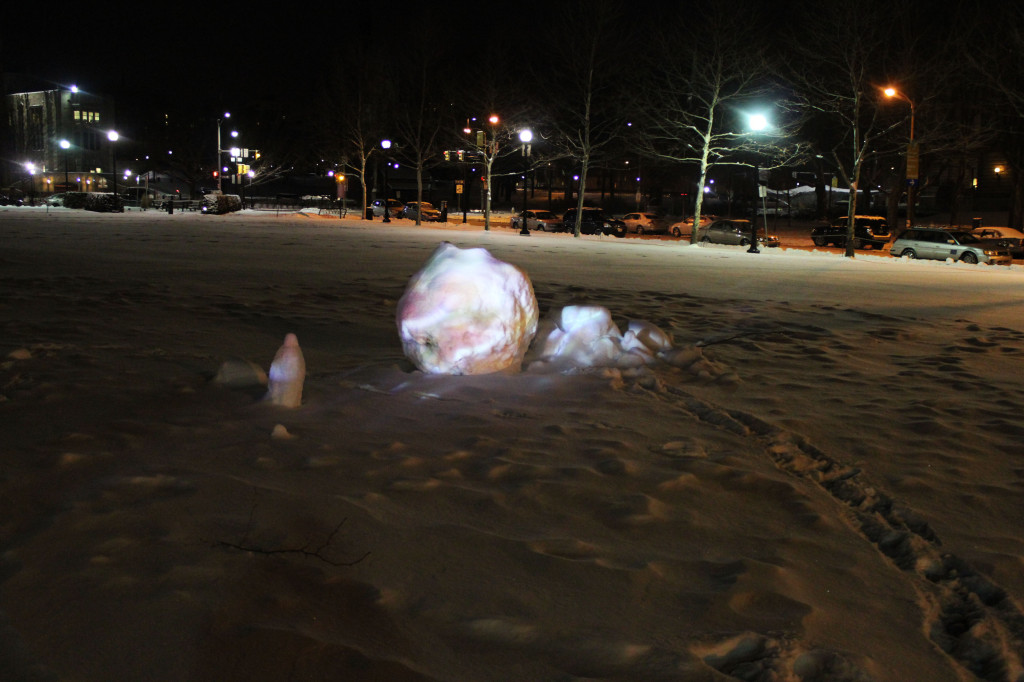“SPAXELS / KLANGWOLKE” by Ars Electronica (2012)

Ars Electronica created an intricate light show using quadcopters. Their use of coordinated motion created an ethereal mood that would confuse and wow the audience.
More information here.

Ars Electronica created an intricate light show using quadcopters. Their use of coordinated motion created an ethereal mood that would confuse and wow the audience.
More information here.

After Bart Jansen’s cat died he had it taxidermied and then transformed into a flying cat. This simple and admittedly sad use of a quadcopter is a comical way to approach topics of life and death and relationships between humans and animals.
More information here.
Festo is an automation company with roots in the automotive industry, and they have several really cool side projects as part of their Bionic Learning Network Program. One of these projects is their mechanical jellyfish, the AquaJelly, which imitates a jellyfish’s motion in water.
More here..
This particular piece is inspiring because its artist essentially designed and built this velociraptor in his garage by himself, whereas many of the pieces reviewed on this blog have been big, high tech group projects. These are only the motion tests for how it moves and walks when being preformed, later Silva went on to create an artificial skin for the beast, but there is certainly beauty in the honesty and simplicity of the skeleton alone.
More here..
This robot is a remote controlled toy. The robot is used to pilot a Mylar balloon which takes the form of animals including fish, sharks, and other sea animals. They give the illusion of swimming or floating through the air. The weightlessness of these balloons also gives off the illusion of flying.
The Paro robots are commercially produced robots that look like cute baby seals designed to comfort patients in hospitals and nursing homes. They are equipped with light, touch, temperature, and sound sensors and even have the ability to learn when they are given a name.
More here..
Here a fleet of quadrocopters with LED lights attached to them take to the skies flying in formation. These flying pixels of light form patterns and animations in the night sky, creating 3-D models in seemingly empty space.
More here..
Push is a very entertaining, approachable robot who rolls around the Disney World parks talking to guests. He is voiced and controlled remotely in real time, and his mechanical/electrical workings have been very well disguised.
More here..
For this project our group took three projectors out to Schenley Plaza and projected kaleidoscopic images of marbles onto the tent.
Our original intent was to project onto a large snowball, but we chose to use the tent instead in the interest of modifying an already existing structure instead of creating a sculptural piece. Our main goal was to transform the space and project interesting geometric visuals and we found that the tent was a good, smooth surface without any patterns on its surface to disrupt the projection.
Our piece was well received by passers-by. It was very cold that night so not many people were walking around, but a group of Korean college students came by and asked us about it. They watched for a few minutes before going on their way. A few other people also walked past and gave us shy but curious looks.
When we were satisfied with our work with the tent we turned our projectors to the giant snowball we had started making two weeks prior. This was simply out of curiosity for how it would look and we were satisfied with the results. We agree that it would have had far more impact if we had been able to make it bigger.
We were surprised when at this point a man walking by walked up to us and asked if he could take a picture. We invited him over and took his picture next to the snowball. His English was a bit difficult to understand but he seemed pleased and went on his way. It is possible that the snowball being smaller and closer to the ground than the tent made it more accessible to him as the audience, and so he initiated an interaction.
We were very glad that we had decided to use three projectors, because if we did not have that many it would have been impossible to see the images with all the ambient light in the area. Prior to this attempt we had run into problems with our inverter and one of our tripods,but thankfully we were able to resolve those issues and get good results.
Here is the video we projected: